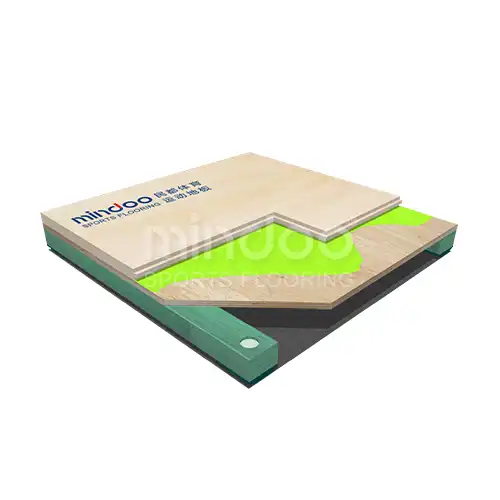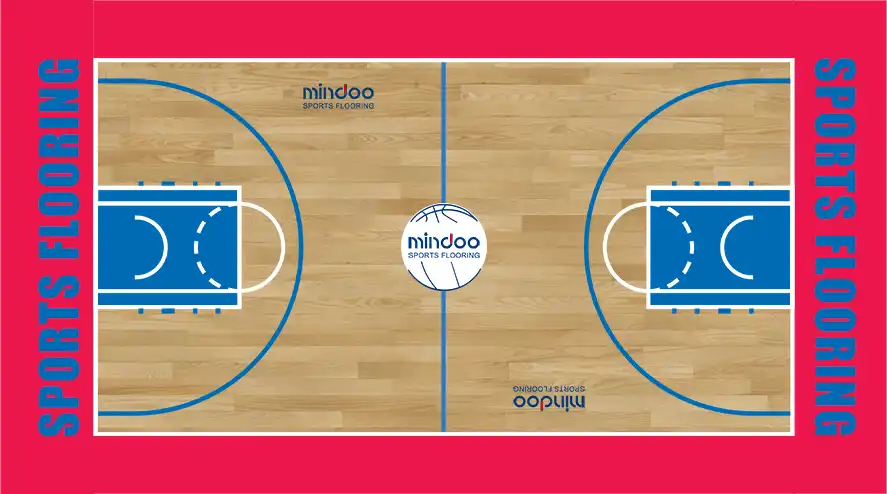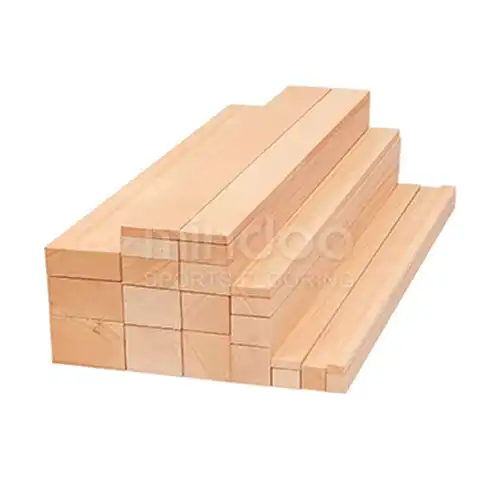Do You Really Need Rubber on Badminton Wood Flooring? Here's What You Should Know
When it comes to creating an ideal badminton court, the flooring is crucial. A badminton court has specific requirements—both in terms of performance and safety. A common question that arises when designing such spaces is whether a layer of rubber should be added to the wooden floor. The answer isn’t straightforward, as it depends on various factors like the type of wood, the level of play, and even the overall design of the facility. Let's break down the need for rubber on badminton wood flooring to help you make an informed decision.

Understanding the Role of Rubber on Badminton Courts
Before diving into whether rubber is necessary, let’s first understand why it might be considered. Rubber, often in the form of tiles or a thin sheet, is commonly used in sports flooring due to its excellent shock absorption and slip resistance properties. When combined with wood flooring, rubber is typically added to enhance durability and provide additional cushioning during high-impact movements.
In badminton, players frequently make fast lateral movements, sudden stops, and jumps, all of which place significant stress on their joints. The thought behind adding rubber is to increase comfort, reduce injury risks, and extend the lifespan of the wooden surface. However, there are specific trade-offs that need to be considered before making that decision.
Pros of Adding Rubber to Badminton Wood Floors
Shock Absorption
The primary reason for adding rubber is to enhance shock absorption. Rubber can cushion the impact of rapid movements, helping to reduce the stress placed on players’ knees, ankles, and lower back. In a sport like badminton, where quick footwork and sudden directional changes are a constant, this added cushioning can go a long way in preventing injury.
Increased Traction
Rubber provides an additional layer of friction that can make a significant difference in a fast-paced sport like badminton. This added grip helps reduce the chances of slipping, especially in cases where the wooden floor might get a little too slippery due to sweat or humidity. A layer of rubber can ensure that the players maintain better control over their movements, giving them the confidence to make those quick cuts and turns.
Durability
Badminton, especially in a high-traffic setting like a commercial gym or a sports center, can take a toll on the wood over time. Rubber helps protect the wooden floor from wear and tear by acting as a buffer against heavy foot traffic. It reduces the abrasion that would otherwise occur from constant movement and helps preserve the wood’s appearance and function.
Noise Reduction
Rubber surfaces are effective in dampening sound, which can be beneficial in sports facilities that house multiple courts or activities. The thud of players’ movements and shuttlecock hits can be noisy, especially in enclosed spaces. A rubber layer can absorb some of that sound, creating a quieter and more comfortable environment for players and spectators alike.

Cons of Adding Rubber to Badminton Wood Floors
Cost and Maintenance
While the benefits of adding rubber seem clear, it’s important to weigh them against the added costs. Rubber flooring, especially in large areas, can be expensive. Additionally, the upkeep of rubber surfaces requires attention. Rubber can wear down over time, especially in high-traffic areas, and may require replacement or regular maintenance to ensure it continues to function properly.
Aesthetic Considerations
Adding rubber may alter the aesthetic appeal of a wooden floor. Many players and facility managers prefer the natural beauty of wood in a sports setting. While rubber is functional, it can obscure the look of the wood, and might not match the overall aesthetic vision of the gym or sports hall. This could be a deal-breaker for those looking for a cleaner, more elegant design.
Risk of Over-Cushioning
Too much cushioning can sometimes be counterproductive. If the rubber layer is too thick or not properly engineered, it could reduce the stability of the floor, leading to a less predictable surface. Players might feel that their movements are a bit "soft" or delayed, which could impact their performance. The right balance is crucial to ensure that the added comfort doesn’t undermine the dynamic responsiveness required for a sport like badminton.
Moisture Concerns
Although rubber can help with grip, it can also trap moisture between itself and the wood floor. If there’s poor ventilation, this could lead to issues with mold or mildew, especially in humid environments. Therefore, ensuring proper airflow and ventilation is essential when incorporating rubber into a badminton court design.

When Rubber Is Necessary: Key Considerations
Adding rubber is not a one-size-fits-all solution. It makes sense in certain situations and for specific types of facilities. Here are some scenarios where you might want to consider a rubber layer on your badminton court’s wooden floor:
High-traffic environments: If your badminton court sees heavy use, such as in public sports centers or schools, the rubber layer could prolong the life of the wood and reduce maintenance costs over time.
Competitive play: For professional-level courts where players engage in rigorous play, the added comfort and grip from rubber can help reduce injuries and improve performance.
Multi-purpose facilities: If the floor is used for various sports, including high-impact activities like basketball or volleyball, rubber can provide versatility in meeting different performance needs.
However, if the facility is smaller, with limited foot traffic, or primarily used for recreational play, adding rubber might not be necessary. In such cases, a well-maintained, properly finished wood floor might be more than adequate to meet the needs of the players.
Conclusion: Is Rubber Worth It?
Ultimately, whether or not you need rubber on your badminton court’s wood flooring depends on the specifics of your space, budget, and usage requirements. For high-traffic areas or competitive environments, the benefits of added shock absorption, grip, and durability can be substantial. However, for smaller or lower-use facilities, a quality wood floor without the added layer of rubber may be sufficient.
Carefully weighing the pros and cons, as well as understanding the role of rubber in improving safety, performance, and maintenance, will help you decide if this added layer is the right choice for your badminton court. The key is to balance functionality, cost, and design to create the best playing surface for your needs.





